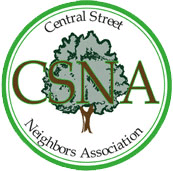Camel's Nose Under the Tent
At the Planning and Development Committee meeting February 9, a zoning change for 912-946 Pitner was introduced. The proposed change was from Industrial to Mixed Use, thus allowing someone to live in the area. Two protagonists appeared- someone who wished to develop a commercial condo in which someone could live in a loft-type residence and a very long-time business owner who was concerned about disruption to this industrial area.
At first, I thought, what's the big deal? Why should I care about a section of the second ward, where the alderman thought that the residents in the area didn't care about the change? I listened to the old time businessman describe his fear that the area could be "disturbed." He was concerned that if residents were allowed, someday they might object to some commercial/industrial activity that today affects no one. And then I had a realization.
Years ago, Evanston had much more industrial/commercial/light manufacturing business. The Rustoleum plant, the steel factory and other blue collar businesses have gone. Residents on the west side of Evanston used to be able to walk to work. This “economic ecosystem” was part of Evanston's diversity. The decline of manufacturing in the US economy is a larger phenomenon than a certain zoned section of Evanston. But once lost, an industrial area would be hard to restore. Already, there has been a trend towards residential conversion of previous commercial areas- witness the loss of Ed Hynes Lumber and the subsequent townhouses. If the mixed use zoning change is approved, the camel's nose of residential development will be under the tent.
Evanston has created historic preservation zones- areas where our fine residential architectural heritage is protected. I see the industrial zoned areas in the same light. Others may argue that the market should direct the best use of land, but, as the current economic crisis shows us, the market, acting without direction or regulation, does not always produce the best outcome.
I respectfully ask the Zoning and Planning Committee to deny this request.
- johnzbesko's blog
- Log in to post comments

Comments
jeffpsmith
Thu, 02/12/2009 - 11:11
Permalink
Zoning for Jobs Too Often Overlooked
John, you raise an important point, and one that has too often been ignored in Evanston planning, except by West Side residents who correctly squawk that we should do more to preserve and foster jobs.
You'd think it would be self-evident that residential development tends to drive out manufacturing, through the triple-whammy of land value increases, tax hikes, and objections of neighbors who move into an industrial-commercial area and then complain that there's industry and commerce. Of these, the market is the strongest driver, because residential and mixed-use development is more lucrative in urban land.
In response, numerous cities have enacted zoning tools, often combined with other incentives, to preserve industrial and especially light manufacturing uses. Sacramento has industrial preservation zones; Oakland has been debating ways to preserve industrial land use through zoning; New York has industrial business zones for the same purpose; and even Chicago has Planned Manufacturing Districts where you cannot, as of right, site a large non-manufacturing use.
By contrast, Evanston's focus and set of incentives has been overwhelmingly targeted at residential development, and amazingly continues to be so despite the collossal collapse of the residential real estate sector. Mantras that grossly oversimplify sprawl v. transit-oriented development get repeated mindlessly, with no consideration of where the jobs are to which residents are supposed to commute by bus and rail.
Comprehensive planning for a future that looks beyond a couple years' worth of building permits and transfer taxes takes both vision and political will. As Brad Lander of NYC's Pratt Center for Community Development put it, the $64,000 question is whether "elected officials place enough value" on manufacturing businesses and the jobs that they provide "that they will be willing to protect them over time."